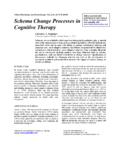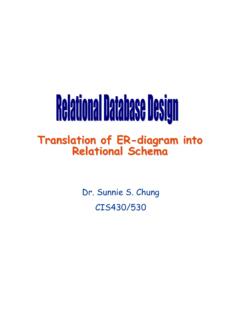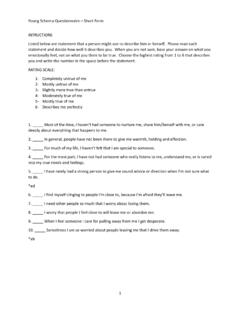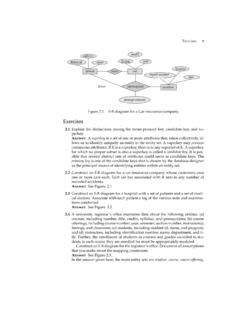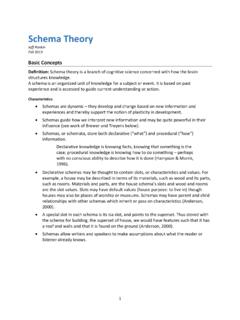Transcription of Scaffolding Strategies for ELLs - Fordham University
1 Scaffolding Strategies for English Language Learners Bernice Moro, NYC RBERN@ Fordham University Learning & Language Objectives Identify the purpose of Scaffolding Describe the six scaffold Strategies and the various activities that can be used to facilitate academic language for ells Use the Bilingual Common Core language progressions to differentiate instruction for ells Explain which scaffold Strategies and activities can address each of the Bilingual Common Core language progressions for ells Use content vocabulary orally and in writing Use oral and written language to describe, identify, explain Scaffolding : An Overview Scaffolding is a term used to describe appropriate assistance provided to students to learn what alone would have been too difficult for them to learn on their own Theorist that influenced this method: Led Vygotsky (1896-1934), Russian Psychologist, introduced concept of zone of proximal development (ZPD) Zone of Proximal Development Scaffolding .
2 An Overview Stephen Krashen, a researcher in second language acquisition, introduced theory of comprehensible input Jerome Bruner, researcher in cognitive and educational psychology, coined the term as a description of the kind of assistance given by the teacher or more knowledgeable peer in providing comprehensible input and moving the learner into the zone of proximal development Scaffolding Scaffolding is tutorial behavior that is contingent, collaborative and interactive Contingent: action depends on / influences / is influenced by other actions; Collaborative: end result is jointly achieved; Interactive: includes activities of two or more people who are mutually engaged. Walqui, Aida, The International Journal of Bilingual Education and Bilingualism.
3 Vol. 9, No. 2 (2006). Sources of Scaffolding Four sources of Scaffolding : assisted by an expert ( teacher); collaborating with other learners; assisting a lower-level learner; working alone internalized practice, inner speech, etc., are employed. p. 168 Walqui, Aida, The International Journal of Bilingual Education and Bilingualism. Vol. 9, No. 2 (2006). Six Scaffolding Strategies for ells Modeling Bridging Contextualizing schema Building Text Representation Developing Metacognition Modeling Students need to be given clear examples of what is required of them. Bridging New concepts need to be built on previous knowledge and understanding. Weave new information into existing mental structures.
4 Contextualization Provide verbal contextualization by creating analogies based on student experiences. Embed academic language in sensory context by using pictures, manipulatives, film [without sound], authentic objects and source of information schema Building schema are clusters of meaning that are interconnected. Students need to see the connections. Some examples of things a teacher can do: preview the text; note headings, captions, titles of charts, etc. Text Representation Transform linguistic constructions found modeled in one genre into forms used in another genre. Example: short stories or historical essays into dramas or personal narratives Developing Metacognition Involves the following: Consciously apply the Strategies while engaging in activities To know and to be aware of the most effective strategy for the particular activity Self monitor, evaluate and adjust during performance and to plan future performance based on the evaluation after an activity What are some Scaffolding activities we can use in the classroom?
5 New Terminology! New Language Arts Progressions Formerly English as a Second Language Learning Standards Home Language Arts Progressions Formerly Native Language Arts Learning Standards New Levels! 5 Levels of Language Progressions (Entering, Emerging, Transitioning, Expanding and Commanding) Formerly 4 Levels (Beginning, Intermediate, Advanced and Proficient) Why the change ? Terminology is reflective of NYS s multilingual student population and diverse ways in with languages are learned and taught in NYS. New levels align with research about stages of language and literacy development. See Theoretical Foundations document for more information Table courtesy of EngageNY Student Performance Descriptors for New Language Arts Progressions 5 Levels Entering Emerging Transitioning Expanding Commanding When acquiring a new language, students at each level are able to demonstrate the following with their new language receptively (listening, reading) and productively (speaking, writing).
6 RECEPTIVE LISTENING Recognize pre-identified tier 1, 2 and 3 words found in the text/context Associate and organize words with support to understand and analyze the text Marco Recognize pre-identified phrases and short sentences found in the text/context Associate and organize phrases and sentences with support to understand and analyze text Tasfiah Recognize information independently Associate and organize information after teacher modeling to understand and analyze text Recognize information independently Associate and organize information independently using teacher provided tools Ko Than Nu Recognize information independently Associate and organize information independently with guidance from teacher Damaris READING Recognize
7 Pre-identified tier 1, 2 and 3 words found in the text/context Associate and organize words with support to gain more complex and detailed understanding and analysis of the text Marco Recognize pre-identified phrases and short sentences found in the text/context Associate and organize phrases and sentences with support to gain more complex and detailed understanding and analysis of the text Ko Than Nu Recognize information independently Associate and organize information after teacher modeling to gain more complex and detailed understanding and analysis of the text Damaris Recognize information independently Associate and organize information independently using teacher provided tools to gain more complex and
8 Detailed understanding and analysis of the text Recognize information independently Associate and organize information independently after guidance from teacher to gain more complex and detailed understanding and analysis of the text Tasfiah PRODUCTIVE SPEAKING Use pre-taught one word answers Complete sentence starters Participate in partnership and teacher lead small group discussions Marco; Tasfiah Use provided key phrases and short sentences Complete sentence starters Participate in partnership and small group discussions Use word banks to incorporate key vocabulary and phrases into their discussion Share ideas without prompting and support Participate in partnership, small group and whole class discussions Use glossaries of terms to independently select and use new vocabulary and phrases Initiate discourse Participate in partnership, small group and whole class discussions Damaris.
9 Ko Than Nu Lead discourse Participate in partnership, small group and whole class discussions WRITING Complete cloze-type paragraphs Use pre-identified key words Marco Develop short paragraphs Use pre-identified key phrases and short sentences Damaris; Ko Than Nu Develop short essays or text Use word banks to incorporate key vocabulary and phrases into their writing Develop multiple paragraph essays Use a glossary of terms to independently select and use new vocabulary and phrases Tasfiah Develop multiple paragraph essays independently Table courtesy of EngageNY Student Performance Descriptors for Home Language Arts Progressions 5 Levels Entering Emerging Transitioning Expanding Commanding When developing home language, students at each level are able to demonstrate the following with their home language receptively (listening, reading) and productively (speaking, writing).
10 RECEPTIVE LISTENING Recognize pre-identified phrases and short sentences found in the text/context Associate and organize phrases and sentences with support to understand and analyze text Recognize information independently Associate and organize information after teacher modeling to understand and analyze text Recognize information independently Associate and organize information independently using teacher provided tools Damaris Recognize information independently Associate and organize information independently based on teacher guidance Ko Than Nu Recognize information independently Associate and organize information independently with guidance from teacher Marco Tasfiah READING Recognize pre-identified tier 1.










